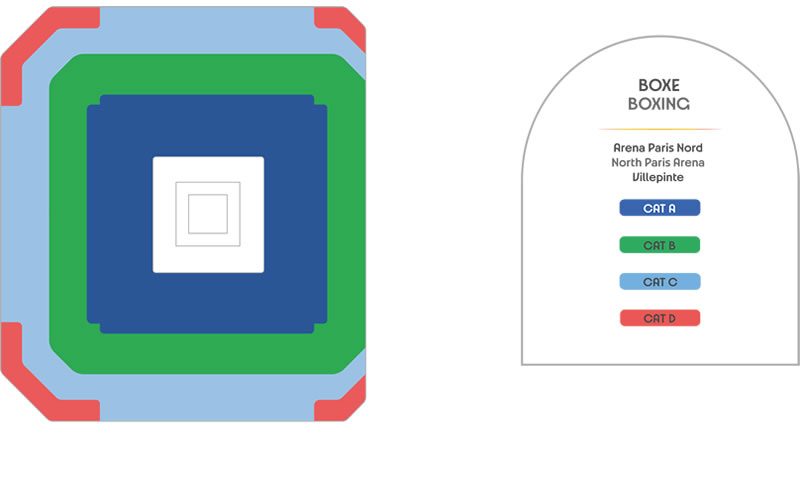BOX16 M - 1/4 finals / W - 1/16, 1/4 finals - Summer Olympics - Paris Olympic 2024 Olympic Boxing Tickets

North Paris Arena - Boxing
Olympic Boxing
Olympic Boxing is one of the most historic and respected sports in the Summer Olympic Games, combining strategy, speed, skill, and raw power. Introduced in the 1904 Olympics for men and added for women in 2012, it has evolved into a global showcase of some of the most disciplined and talented fighters from around the world.
The Olympic boxing tournament is organized by weight classes, allowing boxers of similar size to compete fairly. As of recent Games, men compete in seven weight divisions and women in six. Bouts are typically three rounds of three minutes each, with fighters scoring points through clean, accurate punches and defensive technique. Judges score each round, and winners are determined either by points or referee stoppage.
Unlike professional boxing, Olympic boxing emphasizes safety and scoring precision over knockouts. Boxers wear mouthguards and gloves designed to reduce injury, and bouts are closely monitored by referees and medical staff. Since the removal of headgear in men’s competitions in 2016 (to align with professional standards), the focus has increased on defense and technique.
Olympic boxing has been a launchpad for many of the sport’s most legendary figures. Muhammad Ali (then Cassius Clay), Joe Frazier, George Foreman, and Sugar Ray Leonard all won Olympic gold before rising to professional fame. On the women’s side, fighters like Claressa Shields have brought attention and prestige to the sport with dominant Olympic performances.
Countries with strong amateur boxing traditions—such as Cuba, the United States, Russia, Kazakhstan, and Great Britain—have consistently produced top-tier talent. Cuban boxers, in particular, have a rich Olympic legacy, known for their technical brilliance and remarkable medal hauls.
Women’s boxing, still relatively new to the Olympic stage, has rapidly grown in popularity and competitiveness, offering thrilling matchups and showcasing the rise of female talent from around the globe.
Olympic boxing continues to be a powerful display of courage, discipline, and international rivalry. It blends the raw intensity of combat with the refined skill of sport, offering fans an emotionally charged and technically fascinating spectacle every four years. It remains one of the purest expressions of athletic determination in the Olympic Games.
